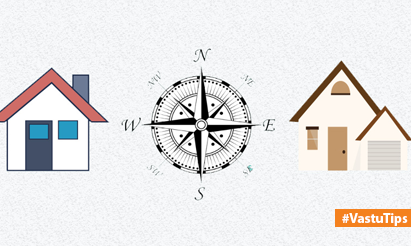Septic Tank Vastu for Right Location, Position, & Direction
Sewage and wastewater from buildings are treated and stored in septic tanks, which are enormous subterranean tanks. The tank is intended to retain wastewater and let it break down naturally. It is usually constructed of concrete or fiberglass. After undergoing additional treatment and filtering in a drain field, the partially treated effluent is then discharged back into the surrounding environment.
Because they can manage the wastewater produced by a single structure or a small group of buildings, septic tanks are frequently employed in rural or suburban areas without access to a centralized sewage treatment system. They are an inexpensive and low-maintenance method of managing sewage and wastewater, but regular maintenance is necessary to keep them functioning safely and properly.
Importance of the Right Septic Tank Location as per Vastu
All of the garbage from our home is collected in an underground pit called a cesspool or septic tank. Because there were fewer people in those days, septic tank location wasn’t something that was carefully considered. All homes, however, now require a separate septic tank in order to keep their waste disposal system functioning properly. The waste material turns into sludge and gasses because it contains anaerobic microorganisms.
If septic tanks are not positioned properly, they are said to gather bad energy and may result in Vastu Dosh for the home. These rules also contribute to the considerably more effective preservation of natural resources. Positioning septic tanks according to Vastu prevents groundwater resources from being depleted and helps maintain ecological equilibrium.
A bad odor may come from leaks or building flaws. When combined with the effects of magnetic and solar radiation, this circumstance may give the house a bad aura.
Impact of Placing a Septic Tank in the Wrong Direction as per Vastu
North: Installing a septic tank in this direction may cause issues with your career. This indicates that the inhabitants may experience difficulties in their careers and discover that all avenues for advancement and financial gain are closed to them.
North-East: Vastu dictates that a septic tank should not be located in the north-east because of the potential health risks. This can result in serious health problems including paralysis, neurological diseases, and memory loss, as well as persistent illness in the home.
West: According to Vastu, putting a septic tank towards the west might prevent aspirations from coming true. It may also have an effect on your profitability, and despite your best efforts, you could not see results. It may also result in disagreements or problems over property.
East: Digestive system and liver problems are caused by septic tanks facing this direction. It also results in social desertion and the possibility of social rejection.
South-East: It may lead to everyday challenges in your life, such as marriage or childbearing issues. Cash shortages, financial losses, and stopped payments are some possible outcomes.
South: Avoid digging your cesspit facing southward since this may cause mental distress. One should anticipate legal conflicts and court challenges. It also results in a decline in goodwill and brand awareness for your company.
Septic Tank location as per Vastu for North Facing House
In a house facing north, it might be difficult to find the septic tank. For the obvious reason that a North Facing’s front is always squarely in the North or North East. Vastu dictates that one should not place a septic tank in any of these directions. Septic tanks are prohibited in the North for several main reasons, including the potential to obstruct the residents’ chances for financial growth and mobility.
Septic Tank location as per Vastu for South Facing House
The best place to install a septic tank for a home with a south-facing entrance is north of west, north, and east. Pay close attention to the directions you avoid, such as south-east, north-east, or south-west corner.
Septic Tank location as per Vastu for East Facing House
The north-west side of the house should be the Vastu location for the septic tank on an east-facing home. It doesn’t matter if your home faces east or west—Vastu dictates where your septic tank should be placed.
Septic Tank location as per Vastu for West Facing House
The best orientation for a septic tank installation in a west-facing home would be west or north-west. The South or South-West direction is the second-best choice.
Vastu Guidelines to follow while Constructing a Toilet Septic Tank
Make sure the tank is at least one to two feet away from the wall of the compound. Place the tank such that the length is on the east-west axis and the width is on the north-south axis. Make sure the liquid portion exits from the east and the solid waste leaves from the west while installation.
Vastu Remedies for Septic Tank
Vastu treatments, such erecting a pyramid or crystal grid, can assist balance the energy flow when a septic tank sits beneath a stairway. According to Vastu, a septic tank should be located away from the main entry and living areas, towards the north-west or south-east of the home.
Vastu Remedies for Septic Tank in South-East Corner
Although Vastu Shastra does not recommend having your septic tank in the south-east corner of your property, there are ways to lessen the negative consequences. Neem is recognised for its cleansing properties, therefore planting a neem tree close to the sewage tank can help offset the bad energy. To further help dispel the bad energy, consider painting the septic tank a pale blue color. These little but effective steps can help balance the energy of the sewage tank in a more Vastu-friendly way.
Vastu Remedies for Septic Tank in North-East Corner
Vastu Shastra considers the north-east corner to be a crucial area, and installing a septic tank here might result in major Vastu dosh. An efficient way to combat this is to add a copper strip around the septic tank. Positive energy flow may be enhanced and negativity dispelled by the characteristics of copper, according to popular belief. An alternative strategy would involve positioning a figurine of a three-legged toad close to the tank. This is a common symbol in Feng Shui and Vastu, which is said to draw riches and positive energy.
Vastu Remedies for Septic Tank in South
Vastu Shastra offers many solutions for a septic tank located in the south in order to counteract any potential negative effects. Using Vastu pyramids is one of the most successful solutions. These pyramids may be used to balance the energy by putting them around the septic tank. It’s also a good idea to put wind chimes next to the tank since they’re supposed to disrupt the negative energy pattern with their sound vibrations. A more harmonious and constructive energy flow within and around the house can be restored with the use of these therapies.
Size of Toilet Septic Tank as per Vastu
The size of each type of water tank varies depending on the size of the home. Analogously, the number of bedrooms in a house dictates the size of the septic tank. The septic tank in the house guarantees effective wastewater treatment and appropriate waste disposal. The proper measurements must be used while building the septic tank in order to make maintenance and repairs easier. By doing this, the wastewater treatment system’s correct operation will be guaranteed.
| Number of Bedrooms | Septic Tank Size |
| Up to 2 | 3,000 liters |
| 3 | 4,500 liters |
| 4 | 6,500 liters |
| 5 or more | 7,500 liters or more |
Do’s and Don’ts for Septic Tank Position as per Vastu
Do’s
- Make sure your home’s walls are not in contact with the septic tank, as this might transmit bad energy.
- Find the septic tank’s output pipes facing either north or west.
- Make sure the sewage tank outlet faces either east or west.
- Preserve a minimum of two feet of space between the boundary wall and the septic tank.
Don’ts
- The septic tank shouldn’t be positioned next to an underground tank or bore well, or just in front of the main door.
- Never build a kitchen, bathroom, or bedroom atop a septic tank.
- Don’t build a septic tank facing east or north-east as this might cause serious Vastu faults that could affect your health.
- There might be detrimental consequences for the family’s health and welfare if the septic tank is installed facing north, north-east, or east.
How to avoid Vastu Dosh for Septic Tanks
Seeking advice from a Vastu professional and adhering to the suggested location and size requirements are essential to preventing Vastu Dosh (mistakes) with septic tanks. Maintaining a minimal distance between the septic tank and other parts of the home, picking the right orientation for the tank, and making sure the tank receives regular maintenance and cleaning are some of the best strategies to avoid Vastu Dosh. In order to counteract any negative energy flow, it’s also a good idea to avoid positioning the tank towards north-east and to use Vastu remedies.
Here are some more pointers for you to consider:
- Keep the septic tank at least 15 feet away from any other parts of the home, including the well, borewell, and subterranean water tanks.
- To prevent clogs and offensive odors, make sure the septic tank receives routine maintenance and cleaning.
- Employ Vastu remedies to counteract any bad energy flow that the septic tank may have generated, including planting copper strips or plants.
- Refrain from putting the septic tank beneath the stairs as this might cause relationship issues and financial losses.
Conclusion
Maintaining good energy and preventing future health and financial problems in your house depend on the placement of your septic tank being done correctly in accordance with Vastu principles. Vastu dosh may be avoided and a peaceful living environment can be guaranteed by carefully choosing the tank’s placement and according to suggested recommendations. In addition, if the tank is positioned incorrectly, solutions like Vastu pyramids or planting certain plants might assist lessen adverse impacts. A balanced and thriving house is the result of regular upkeep and commitment to these principles.
FAQs
What is the best direction recommended as per Vastu for septic tanks?
Vastu suggests that the best directions for septic tanks are North-West and South of South-West, however it is definitely banned to build septic tanks east of North-East. This location is considered sacred and is also referred to as the “Ishan” corner.
What is the best shape as per Vastu for septic tanks?
The ideal septic tank shape is a circle, followed by square and rectangular shapes.
Can a septic tank be in front of a house?
Septic tanks and houses have different minimum separation standards based on the area, but generally speaking, septic tanks should be at least 10 to 20 feet apart.
What is the minimum distance between a septic tank and water tank?
The closest water source is at least 15 meters away. This is a minimum; if the terrain is stony and there are cracks that might allow the discharge to continue, there should be more.
Where should a septic tank be placed as per Vastu?
The ideal soil is often sandy and unaltered, especially when contrasted with clay and other thick soil types.
What is the best location for a septic tank?
A septic tank needs to be situated on flat ground. To prevent floods and seepage, the tank should ideally be situated on high ground.
Disclaimer: The views expressed above are for informational purposes only based on industry reports and related news stories. PropertyPistol does not guarantee the accuracy, completeness, or reliability of the information and shall not be held responsible for any action taken based on the published information.





It was quite interesting when you told us to place our septic tank underground with an access point in the North-East direction and to make sure that we avoid placing it in the South-west since this is associated with fire. Speaking of septic tanks, I need to get one installed for my new house soon since I plan to move in next month. I’ll keep this in mind while I look for services to hire for my septic tank installation soon. https://www.richardsongradingandseptic.com/septic